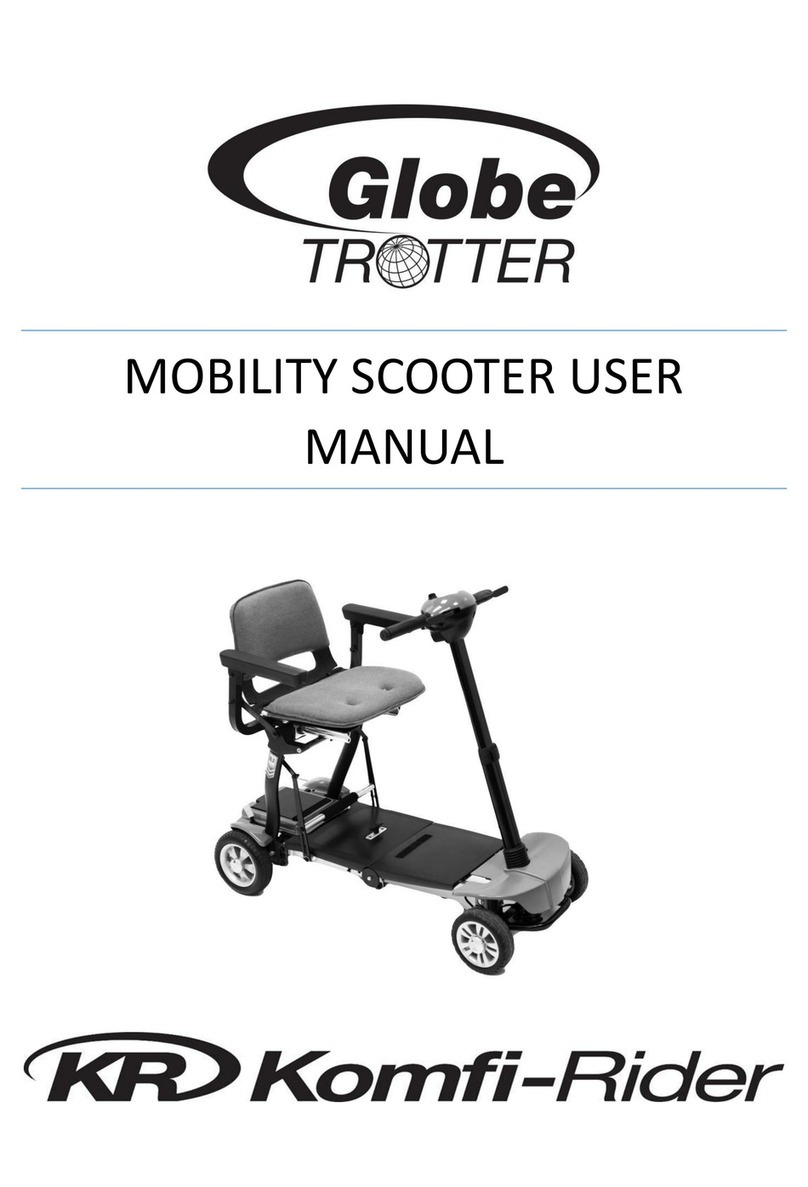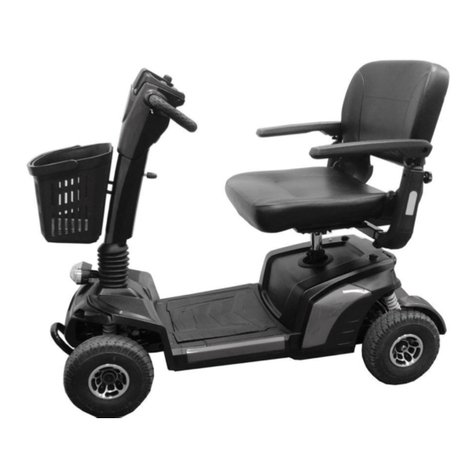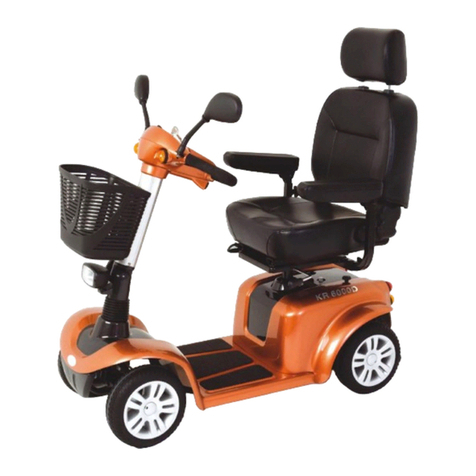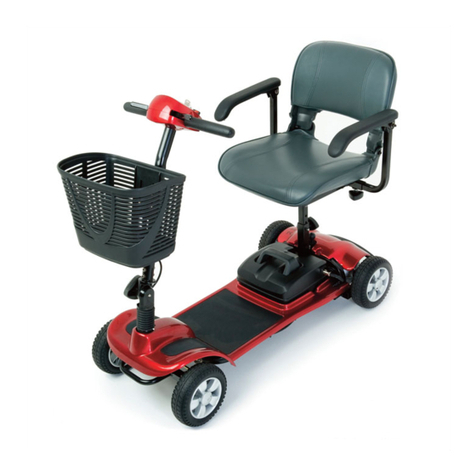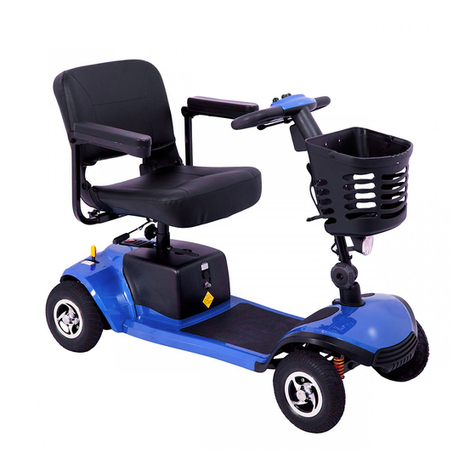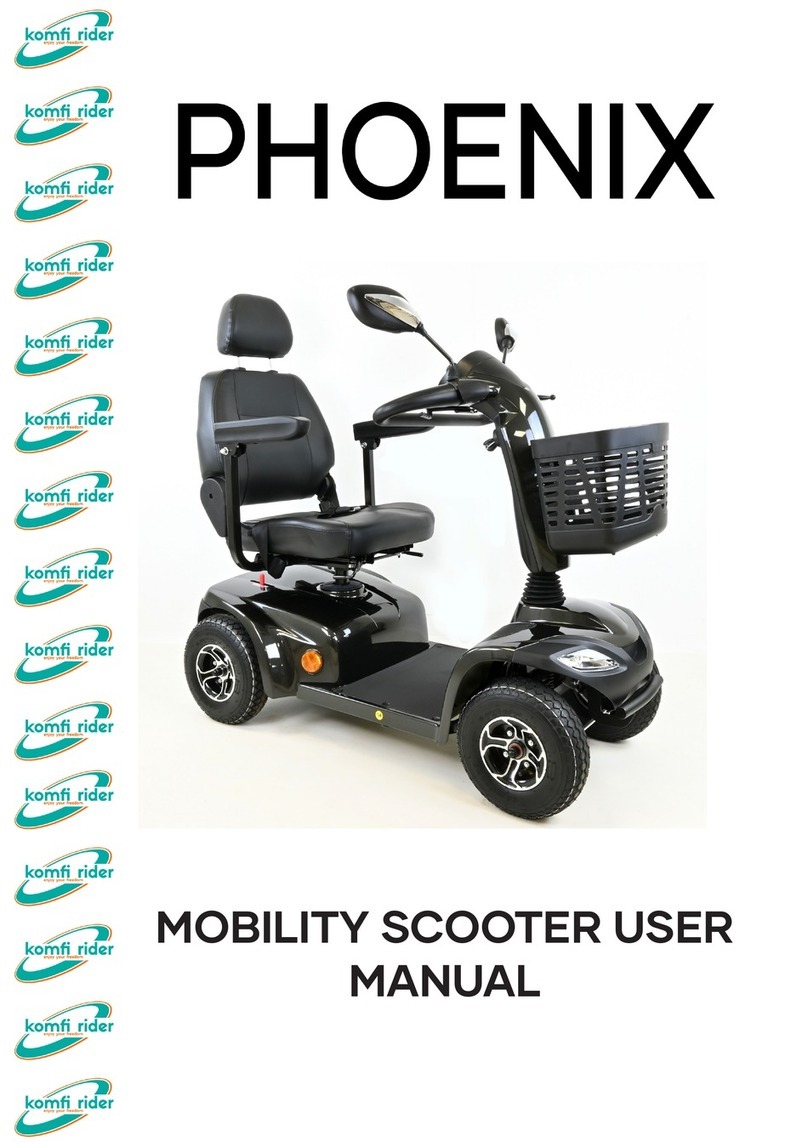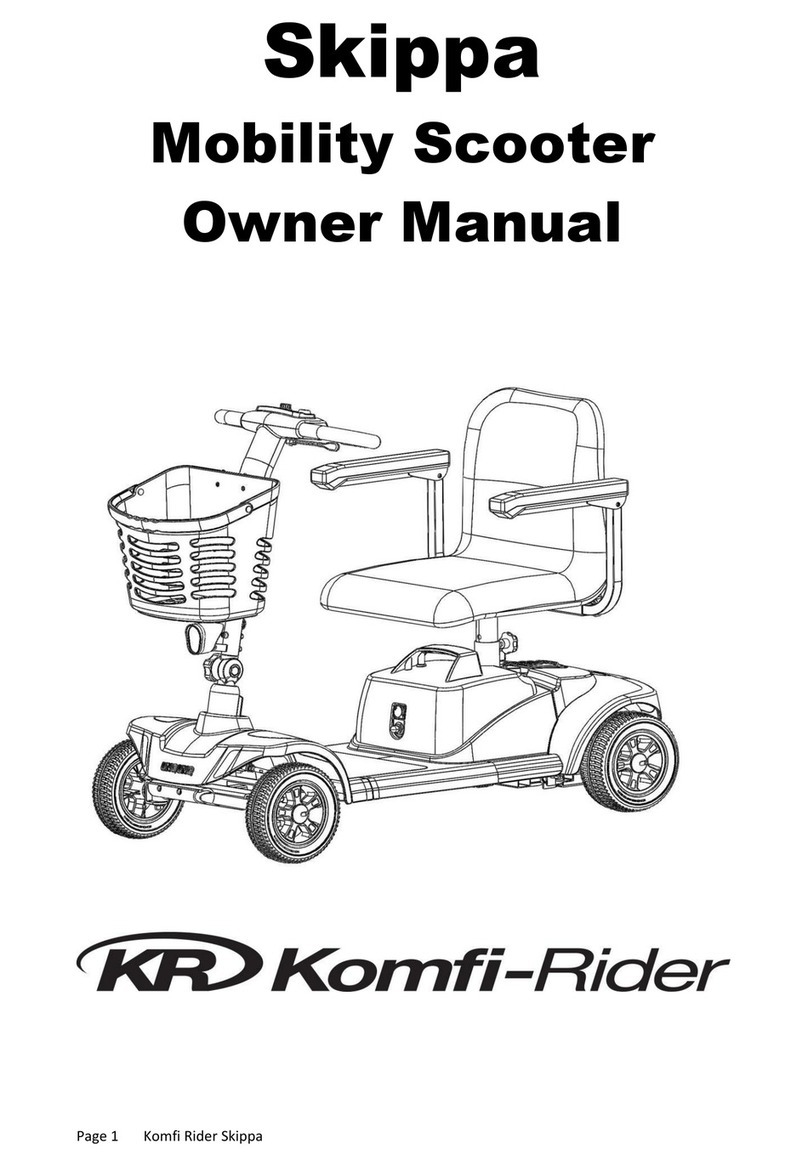9
2. Medium-range mobile transceivers, such as those used in police cars, fire trucks,
ambulances and taxis. These usually have the antenna mounted on the outside of
the scooter; and
3. Long-range transmitters and transceivers, such as commercial broadcast transmitter
(radio and TV broadcast antenna towers) and amateur (HAM) radios.
Note: Other types of hand-held devices, such as cordless phones, laptop computers,
AM/FM radios, TV sets, CD player, and cassette players, and small appliances, such
as electric shavers and hair dryers, so far as we know, are not likely to cause EMI
problems to your powered scooter.
■SCOOTER ELECTROMAGNETIC INTERFERENCE (EMI)
Because EM energy rapidly becomes more intense as one move closer to the
transmitting antenna (source), the EM fields from hand-held radio wave sources
(transceivers) are of special concern. It is possible to unintentionally bring high
levels of EM energy very closer to the powered scooter‟s control system while using
these devices. This can affect powered scooter movement and braking. Therefore,
the warnings listed below are recommended to prevent possible interference with the
control system of the powered scooter.
■WARNINGS
Electromagnetic interference (EMI) from sources such as radio and TV stations,
amateur radio (HAM) transmitters, two-way radios, and cellular phones can affect
powered scooters and motorized scooter. Following the warnings listed below
should reduce the chance of unintended brake release or powered scooter movement
which could result to serious injuries.
1. Do not operate hand-held transceivers-receivers, such as citizens band (CB) radios,
or turn ON personal communication devices, such as cellular phones, while the
powered scooter is turned ON;
2. Be aware of nearby transmitters, such as radio or TV stations, and try to avoid
coming close to them;
3. If unintended movement or brake release occurs, turn the powered scooter OFF as
soon as it is safe;
4. Be aware that adding accessories or components, or modifying the powered
scooter, may make it more susceptible to EMI ( Note: There is no easy way to
evaluate their effect on the overall immunity of the powered scooter); and
5. Report all incidents of unintended movement or brake release to the powered
scooter manufacturer, and note whether there is a source of EMI nearby,
■IMPORTANT INFORMATION
1. 20 Volts per meter (V/m) is a generally achievable and useful immunity level
against EMI ( the higher the level, the greater the protection);
2. This product has an immunity level of 20 V/m without any accessories connected to
it.
